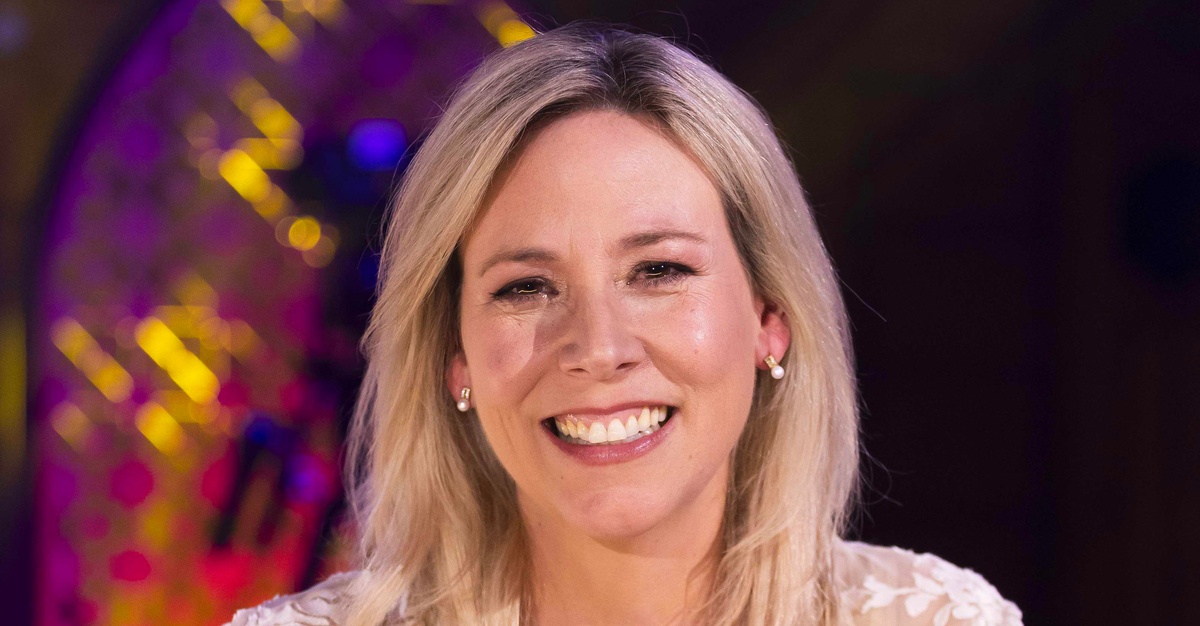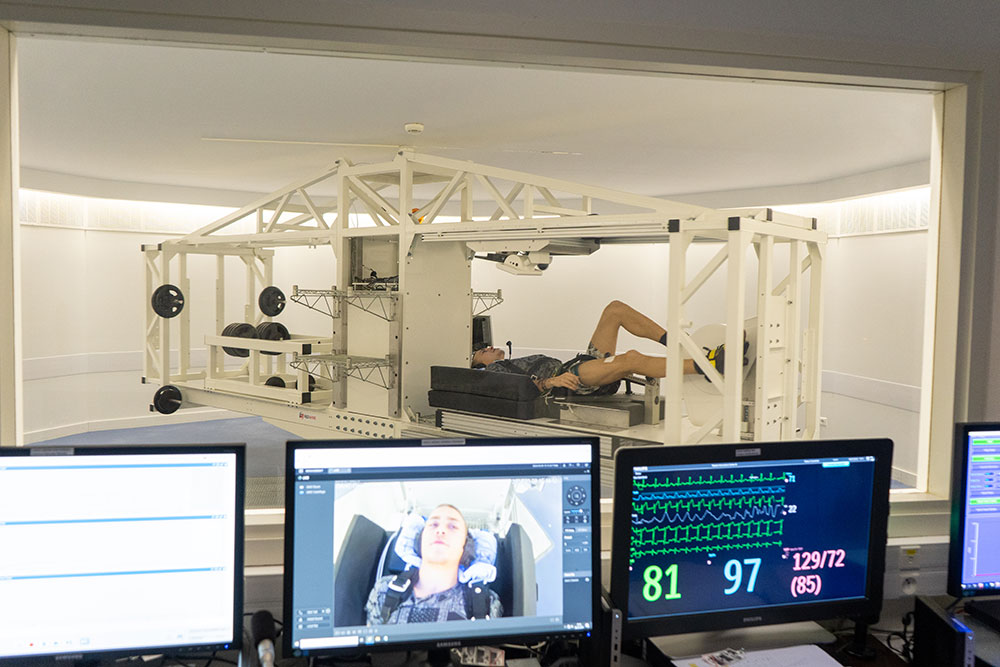-6°, head down
A final round of applause for the CNES and ESA study on prolonged bed rest BRACE (bed rest with artificial gravity and cycling exercises) carried out in Toulouse at the satellite clinic of MEDES, our health branch. The experiment ended on 04/05/2024 for the 12 new volunteers. They spent 88 days in the clinic, including 60 days lying 24 hours a day on beds tilted at -6 degrees, with their heads down (a way to recreate weightless conditions for astronauts in space). Objective? Study the effect of physical exercise (here cycling) and artificial gravity (using a centrifuge) on the harmful effects of microgravity on the human body.

The BRACE study made it possible to test physical exercise (here cycling) to counteract the harmful effects of microgravity on the human body. Credits: CNES/R. Gaboriod.
The goal is to determine whether artificial gravity provides a benefit compared to exercise performed alone. The 12 volunteers were divided into 3 groups: 4 of them were in the “centrifugation and exercise” group, 4 of them were in the “exercise alone” group, and the other 4 formed the “control” group, without any prevention method. Many medical measurements and tests were performed on the participants by the 14 scientific teams participating in the study: muscles, bones, cardiovascular, immune system, and others, and all of them were examined.
Among the protocols implemented, we can mention for example the research team at the Hubert Coren Interdisciplinary Institute (CNRS UMR7178) in Strasbourg which studies energy balance, i.e. the difference between energy intake and consumption in the human body.
A priority for very long space flights
“ The research team obtained the original data that provides the first evidence“Explains Guillemet-Jauclin Koch, Head of the Life Sciences Department at the French National Center for Space Studies. It has been observed during other studies of prolonged bed rest that the amount of exercise prescribed is directly related to the loss of body mass and fat mass. Recently, in astronauts we have observed significant inter-individual variation in the development of body mass and fat mass after spending 6 months aboard the International Space Station. This variation among astronauts was associated with time spent exercising and physical activity, which had an impact on the two counterparts of energy balance: expenditure and consumption. »
Chronic energy deficiency can exacerbate physiological responses already caused by microgravity. This is especially true of muscle atrophy, cardiovascular maladaptation, or deterioration of mood and well-being.


A human centrifuge at the MEDES Space Clinic in Toulouse, used to produce artificial gravity during the BRACE study. Credits: Medis.
” In our example, by comparing the results obtained in volunteers in the “control” group with the results of volunteers subject to an exercise protocol (on a bicycle) or exercise combined with artificial gravity (centrifuge), we will evaluate the effect of physical exercise whether combined or not. Using artificial gravity to regulate the energy balance, so you can control it better“, explains Guillemette Gauquelin Koch. This comparison will be performed as part of all protocols conducted during the study. For very long flights, such as those planned to go to Mars, it is necessary to counteract the negative effects of microgravity on the body in the most effective way possible. Artificial gravity generated by centrifugation is promising. Works on all devices at the same time. »
The data collected as part of the BRACE study will now be analyzed by scientific teams across Europe. BRACE will provide new and relevant information to better prepare for future spaceflights and thus ensure the health and performance of astronauts with mission success. At the same time, the data collected will be useful on Earth, where these studies represent an excellent model for a hyper-mobile lifestyle.

“Music guru. Incurable web practitioner. Thinker. Lifelong zombie junkie. Tv buff. Typical organizer. Evil beer scholar.”







More Stories
Space tourism. A Frenchman (civilian) will spend a few minutes in space in Jeff Bezos' capsule
Cameroonian woman winner of the Women and Science Award
Apartments for rent in harmony with nature